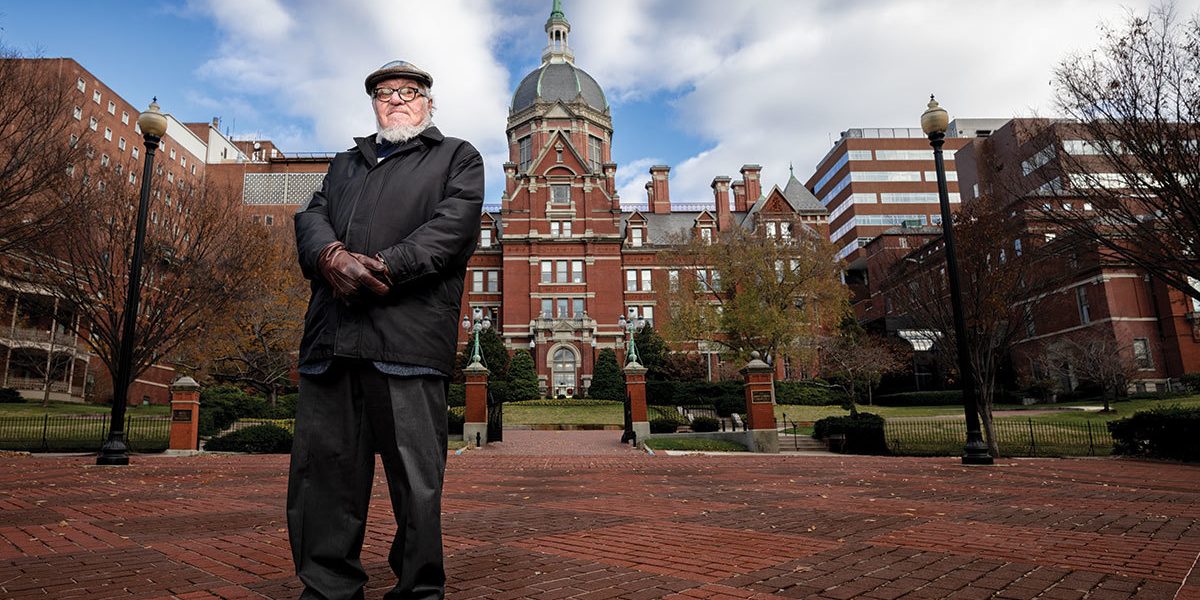Arts & Culture
Antero Pietila Discusses The Ghosts of Johns Hopkins
The writer examines how Hopkins’ wealth influenced Baltimore long after his lifetime.
Longtime Baltimore Sun journalist Antero Pietila—who has also covered politics from South Africa to the Soviet Union—focuses his latest book around the central figure of Johns Hopkins. In The Ghosts of Johns Hopkins: The Life and Legacy that Shaped an American City, Pietila examines the life and legacy of the titular developer, as well as digs deep on the impact his institutions have had on the racial patchwork of Baltimore City.
We talked with Pietila about what inspired the book, writing the first real biography of Johns Hopkins, and whether his institutions are doing enough for modern-day Baltimore.
This begins as a prequel to your last work, Not in My Neighborhood: How Bigotry Shaped a Great American City. Then it becomes a companion.
We are at a very peculiar intersection of history in Baltimore. The names William Donald Schaefer and James Rouse mean less and less. Fewer people remember these individuals who had made a profound impact. These books are sort of designed as introductory assignments for those new to Baltimore. Like David Simon’s The Wire.
No credible biography of Hopkins exists, correct?
He destroyed his papers. Nobody knows why. He was very private in his personal matters and at the same time, had powerful friends, including Arunah Abell, the founder of The Sun. Yes, there were stories about Johns Hopkins in the paper, but nothing personally revealing.
Hopkins grew up on an Anne Arundel plantation and died in 1873. How did he view African-Americans?
He was a Union party member and believed in Lincoln and Reconstruction. But he did not believe in equality by today’s standards. The hospital had a humanitarian mission [to serve black patients], but at the same time, he never expected the University to have black students.
Hopkins was the one of the wealthiest people in the U.S. when he died, and the largest individual B&O Railroad shareholder. How did he make his money?
He started as a dry goods merchant, catering to the needs of Conestoga wagons traveling to the Shenandoah Valley and west to Ohio. He sold whiskey, “Hopkins’ Best,” and was involved in banking, shipping. There wasn’t an enterprise he wasn’t involved in.
During your research, did Hopkins remind you of anyone today?
I never thought of a comparison to someone. But thinking of it now, he was the principal investor in the B&O Railroad, which represented the Silicon Valley of its time.
Hopkins had no children and never married. When did he get interested in philanthropy?
Most likely through George Peabody, who was a close friend. He was also in contact with Enoch Pratt. The turning point seems to be after a brush with death at 37 when he contacted cholera.
What set the course for excellence at the university, medical school, and hospital that bear his name?
The university was modeled after the elite German institutions, and started with very few undergraduate students. It was primarily a graduate university and research institution. Similarly, the hospital was unique in that it began as research hospital.
The “ghosts” of Johns Hopkins refers not so much to various controversies around the University or medical school, for example, the syphilis and lead paint studies, but city’s development, in particular, around the hospital.
Not in My Neighborhood documented the ethnic rotations in West Baltimore, but nobody had outlined what happened in East Baltimore where there had been a strong Czech and Bohemian presence. In Old Town, the ethnic rotations included Germans, Irish, and then German Jews and Russian Jews. I don’t avoid the controversies.
You emigrated from Finland and started as a Sun reporter in 1969. What was your impression of the city?
I thought it was interesting, an ancient-looking city with its rowhouses and an atmosphere that was different than the parts of modern Europe, which I had visited. The extent of the segregation surprised me. I came to Baltimore one year after the riot. Not only was the mood of the city terrible, there were a helluva lot of questions about its future. The situation is tricky today.
And currently?
The mood is again not very good with the level of violent crime, but there are cranes and buildings going up everywhere by the waterfront. It makes you wonder if we are in the middle of a housing bubble.
But you see Hopkins Hospital as a bridge, potentially, spurring redevelopment on the east side from the harbor all the way to its campus.
The Hopkins campus never really brought to fruition the kind of renewal that we were told it would. But I see a lot of promise, particularly in the Broadway corridor. I think there is some kind of possibility for renewal that might connect to Preston Street and Greenmount Avenue. Hopkins has long had a strange, or perhaps stained, is a better word, relationship with the city. Given that this world-class university and medical school and hospital brand that sits in the midst of city with tremendous challenges. It is strange, and strained as well.
There is always the question is Hopkins doing enough for Baltimore? Today, there is the question whether it should have its own police force to set up a perimeter around its campuses. Something like 40 percent of the real estate buildings in the city don’t pay taxes because they belong to nonprofits and are exempt. Eventually that is going to become an issue as well, I imagine.
